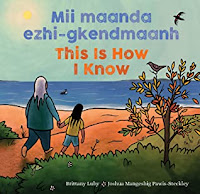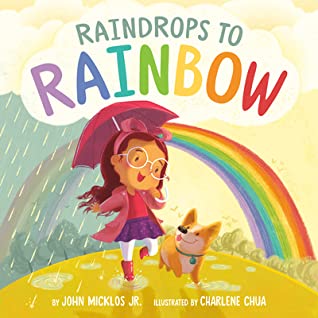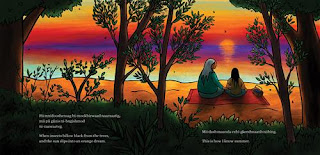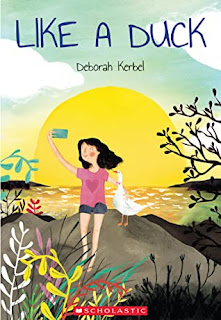I don’t often read picture books that make me cry, but this one did. It reminded me so much of my own mom, the process of her dying and her love of birds. I loved the relationship between the child and their grandma, and the things they liked to do together.
This would be wonderful book to help a child with grieving a loss of a special person in their life, because of the calm and steady way it showed what happened. It’s also the first time I’ve seen a hospice depicted in a picture book.
My thoughts as a creator:
The simplicity of the straightforward
language and description created a sense of comfort when I read this story.
There are many lines that give you space to stop and think and just feel the
emotion. It’s a great example of a quiet and gentle book that can evoke
emotions. I also loved the illustrations in this story. Though many of the scenes take place in the same room, different perspectives add interest, and carefully chosen details evoke emotions to fit with the text.
My thoughts as an
educator:
I think this is a good book to provide
for optional reading in a classroom or library. It needs a quiet space with
some time for discussing the feelings and personal connections that might
emerge when reading. I’d read this in a smaller group setting,
so that children have a chance to talk about their own feelings and
relationships with the special people in their lives.
Ages: 4 - 7
Grades: K - 3
Connections: grandparents, birdwatching, dying, hospice care, therapy dogs
Activities:
Literacy: Draw a picture of something special you like to
do with a grandparent or other family member.
Literacy & Social-Emotional Learning: Contact a hospice or retirement home to see if your students could make drawings or cards for residents. Have students create art or drawings or messages to brighten the walls in a retirement home or hospice.
STEM: Create a
bird-watching station in the classroom (e.g., make a sign for the window, provide
binoculars and bird watching charts and books, as well as a book for students
to record their own bird drawings). Provide materials to create bird nests or
design a bird feeder.
More info:
Bird inquiry resources:
Cornell’s Bird Academy (a forum for discussing citizen science investigations with ways introduce and assess student inquiry projects)
How to explain hospice care to children from Bridge Hospice Care
Description from Kids Can Press:
When Grandma gets sick and comes to stay at her grandchild’s house, she brings her bird feeder. Grandma loves birds. And the child loves the time they now get to have together, drawing pictures of birds and “talking about interesting things.” After a while, though, Grandma’s health declines, and she moves to the hospice. Hanging Grandma’s bird feeder outside the window there makes things better. After a while, though, Grandma continues to grow weaker, and her ability to interact lessens. Difficult as it is, the child adjusts, knowing that, while the situation keeps changing, their love for each other never wavers.
Award-winning author Andrew Larsen beautifully captures the special bond between a child and a grandparent, and sensitively deals with a child’s loss of a loved one. Using the motif of their shared love of birds and its physical manifestation in the form of the bird feeder allows for a continuity in the child’s life that puts the loss in a larger context. Larsen offers an authentic, straightforward presentation of the process of a loved one’s death, from being sick, to going to the hospice, to participating less and less in their relationship, to death. It will lead young readers to ask their own questions about life, death and how we remember those who die. The cool palette and simple lines in Dorothy Leung’s art evoke empathy for the child’s experience, while the presence of the birds adds life and hope to the visual story.
The Bird Feeder was written by Andrew Larsen, illustrated by Dorothy Leung, and published by Kids Can Press.











